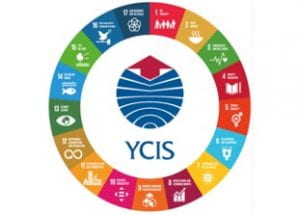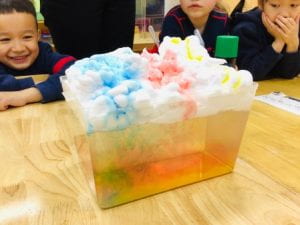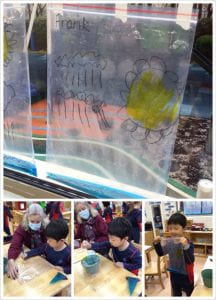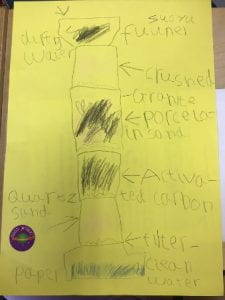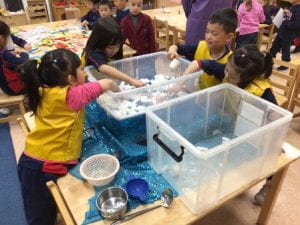Written by: Helen Campbell and Lylia Li, K4 Co-Teachers
As a teacher, when a young child comes and asks you a one of a kind question, what do you do? Do you give them the answer and walk away, or do you pretend not to know and say perhaps this is a question we could ask everyone in our class and see if we can find out? This is exactly what happened in our class.
The discussion of whether we can indeed sit on clouds was the springboard for a whole heap of learning in K4. The children found out that although clouds look fluffy that they are made up of water vapour, this opened up the opportunity to look at the water cycle. Questions were asked – Is the rain clean or dirty? and how does pollution get into the sea?
The children initially looked at Shanghai. The children were able to talk about the vehicles on the road and the factories around the city that made the air dirty, they knew that the polluted air would be absorbed by the clouds and fall as dirty (polluted) rain into the oceans or on the land. This led to an activity about how rubbish and dirty water can pollute the oceans. The K4 teachers made an ocean in a box with beautiful clean water and lots of sea creatures, the box was then polluted with plastic bottles, straws, polystyrene, lentils (as dirt) some things floated and some sank. The children were asked two questions – How does pollution and rubbish get into our oceans? Who pollutes our oceans? Asking these types of thought-provoking questions to young children challenges them to look at the wider world. A key response from these questions really opened their eyes to a global problem. “It’s us, humans, we pollute our oceans,” said one of the children with a look of sadness on his face.
 This K4 class went on to experiment with water filtration kits so they could see how water is cleaned before being put back into the ocean. As a class they have pledged not use single use water bottles anymore, and have stopped using plastic straws in drinks as so many of them end up in the sea causing harm to animals both big and small. This K4 class looked at the Sustainable Global Goals of 6, 11,12 and 14.
This K4 class went on to experiment with water filtration kits so they could see how water is cleaned before being put back into the ocean. As a class they have pledged not use single use water bottles anymore, and have stopped using plastic straws in drinks as so many of them end up in the sea causing harm to animals both big and small. This K4 class looked at the Sustainable Global Goals of 6, 11,12 and 14.
- Display in K4 Classroom showing the learning from the original question.
- The big questions posed to K4.
- Finding out how clouds are like sponges when they get heavy with water it then rains. Shaving foam clouds and coloured rain water.
- Making our mini water cycles.
- Child-initiated diagrams using the display to help label their work.
- Just how do you clean a polluted ocean?
- How do you clean water? Experiments with water filtration kits.
- Child initiated diagram of the water cleaning experiment.
- Using prisms to find out about rainbows and how they are made.
- Planning an emergent curriculum.
- K4’s Water Cleaning Experiments and their pledge to help save pollution ending up in our oceans.
